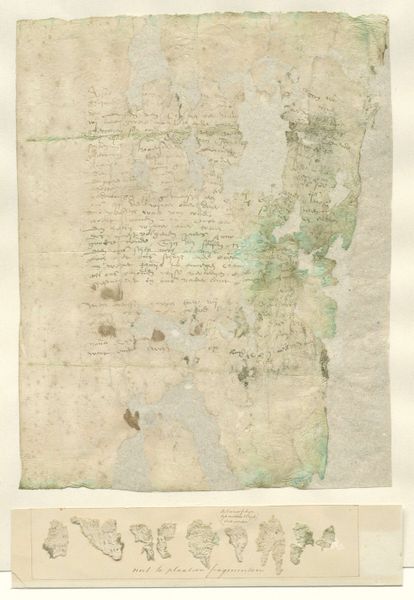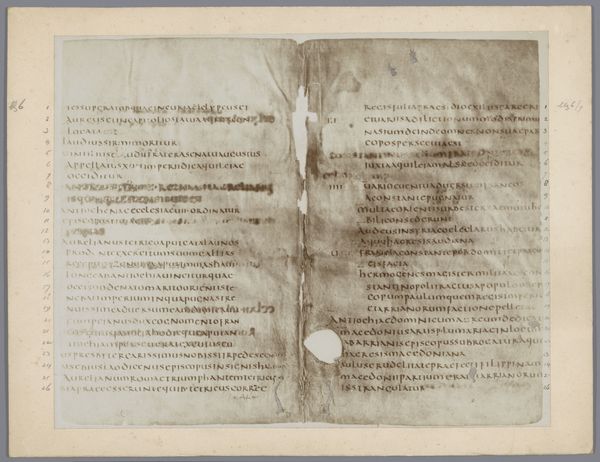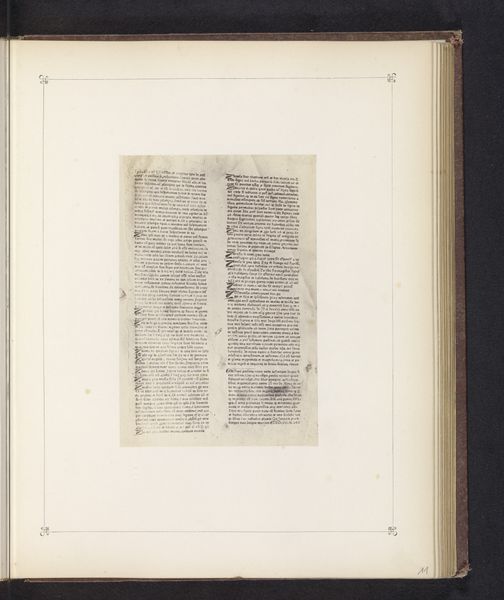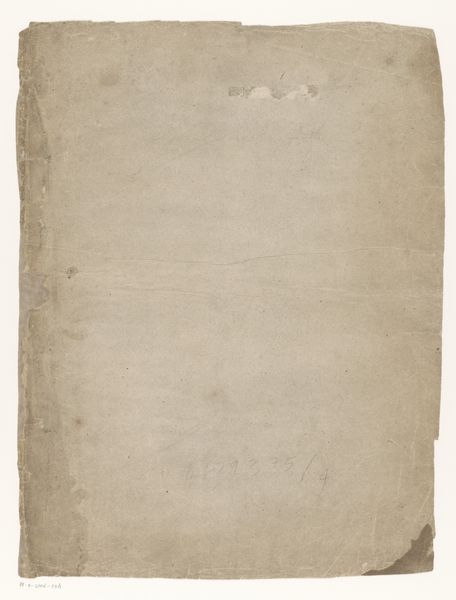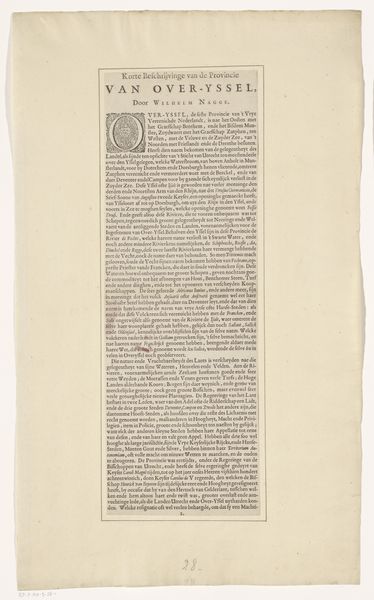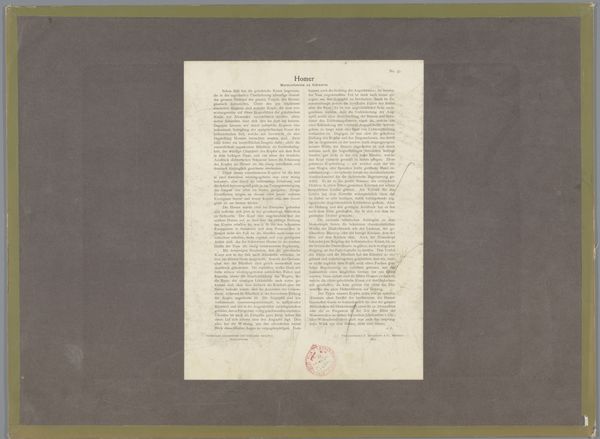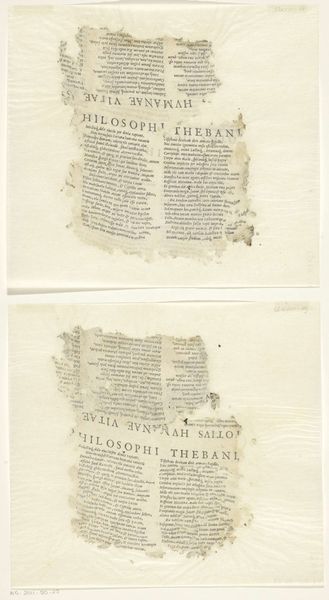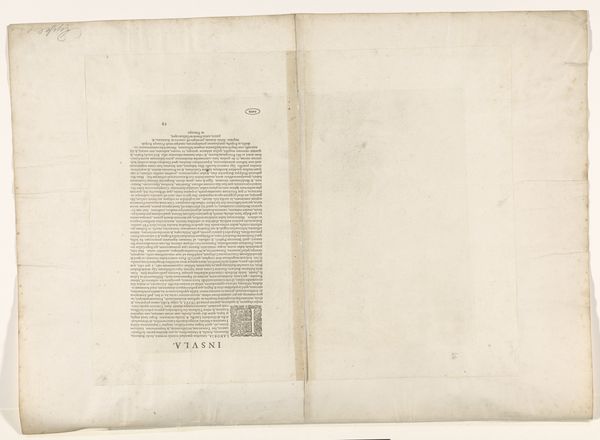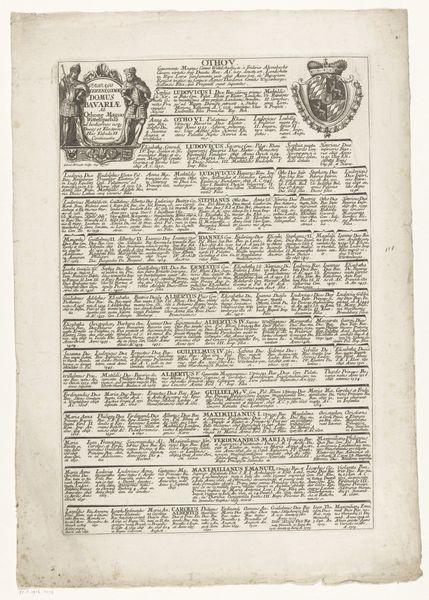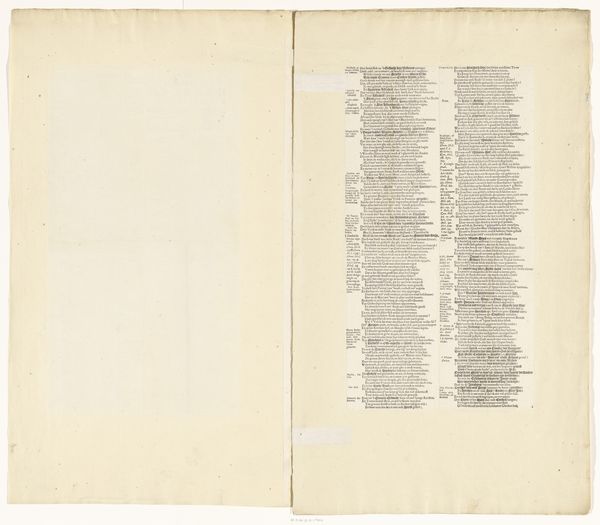
print, textile, paper, ink, engraving
# print
#
textile
#
paper
#
ink
#
engraving
Dimensions: height 468 mm, width 340 mm
Copyright: Rijks Museum: Open Domain
Curator: Standing before us is “Fragment van een manuscript,” created sometime between 1875 and 1903. The artist, Maurits Verveer, masterfully combines engraving, textile, ink, and paper, resulting in this evocative print currently housed here at the Rijksmuseum. Editor: Immediately, I'm struck by the fragility of it. It's as though we are witnessing an artifact on the verge of disappearing, a whispered secret fading into oblivion. Curator: That sense of fragility, I think, is quite intentional. In the late 19th century, there was an increasing fascination with documenting the past. This piece highlights the passage of time and the deterioration inherent in historical documents. The printing press, too, gave these concepts further reach among the public. Editor: Absolutely. Considering Verveer's social context, one could interpret the deliberate rendering of decay as a commentary on the instability of knowledge. What are the implications when those in power decide which fragments of the past are worth preserving, and what do we make of those that aren't? Curator: Indeed, it encourages reflection on whose stories endure and how those narratives are shaped. The artistic approach is quite clever. Verveer juxtaposes legible text with areas of almost total disintegration. It evokes feelings of uncertainty about the reliability of historical records. Editor: Precisely! It's also fascinating to think about what's been physically lost from the manuscript itself. The absent space allows the viewer to contemplate the power structures behind textual redaction and what may be forever erased. Curator: Furthermore, the printing process is inherently about reproduction and distribution of information. I consider Verveer's method in presenting historical sources as commentary on access, legitimacy, and public consumption. The act of reproduction can itself reshape cultural memory. Editor: This manipulation and intentional decay serve as a constant reminder that history is not immutable but something that demands interpretation and reinterpretation as new narratives come to light. It shows how archival fragments speak to not just historical facts, but social and political questions still pertinent today. Curator: This print is a perfect representation of how art functions not only to represent the past, but to critique our present. It's something I will certainly contemplate much further. Editor: Absolutely. It is in the cracks of what has been lost and remembered, that new knowledge is truly made.
Comments
No comments
Be the first to comment and join the conversation on the ultimate creative platform.
